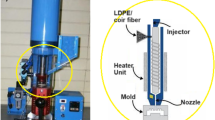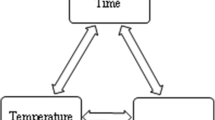Abstract
Research into pyrolysis-based recycling of sheet molding compounds (SMCs) to recover glass fiber for reuse has indicated significant preexisting tensile strength damage in the shredded recycling input materials. This loss in mechanical durability inherently hurts the value proposition of recycled glass fiber by limiting reuse of the fiber for reinforcement. In this study, the mechanical properties of glass fibers at each step in the first lifecycle of an SMC material are measured to assess the extent of cumulating fiber damage prior to recycling and identify potential causes of this degradation to maximum fiber tensile performance.




Similar content being viewed by others
References
American Composites Manufacturers Association: Composites Industry Overview, 2019. https://acmanet.org/composites-industry-overview/ (accessed July 2, 2019).
J. Thomason, P. Jenkins, and L. Yang: Glass fibre strength–a review with relation to composite recycling. Fibers 4, 18 (2016).
R.S. Ginder and S. Ozcan: Recycling of commercial e-glass reinforced ther-moset composites via two temperature step pyrolysis to improve recovered fiber tensile strength and failure strain. Recycling 4, 24 (2019).
S. Feih, E. Boiocchi, G. Mathys, Z. Mathys, A.G. Gibson, and A.P. Mouritz: Mechanical properties of thermally-treated and recycled glass fibres. Compos. Part B 42, 350 (2011).
A.M. Cunliffe and P.T. Williams: Characterization of products from the recycling of glass fibre reinforced polyester waste by pyrolysis. Fuel 82, 2223 (2003).
A.A. Griffith: The phenomena of rupture and flow in solids. Phil. Trans. R. Soc. Lond. 221, 163 (1921).
S. Feih, A.P. Mouritz, and S.W. Case: Determining the mechanism controlling glass fibre strength loss during thermal recycling of waste composites. Compos. Part A Appl. Sci. Manuf. 76, 255 (2015).
L.T. Drzal and M. Madhukar: Fibre-matrix adhesion and its relationship to composite mechanical properties. J. Mater. Sci. 28, 569 (1993).
Acknowledgments
The authors thank the American Composites Manufacturers Association (ACMA) and its members for their input and support of this work and especially David Krug at Continental Structural Plastics for helpful research feedback and discussion.
Author information
Authors and Affiliations
Corresponding author
Additional information
This manuscript has been authored by UT-Battelle, LLC under Contract No. DE-AC05-00OR22725 with the U.S. Department of Energy. The United States Government retains and the publisher, by accepting the article for publication, acknowledges that the United States Government retains a non-exclusive, paid-up, irrevocable, worldwide license to publish or reproduce the published form of this manuscript, or allow others to do so, for United States Government purposes. The U.S. Department of Energy (DOE) will provide public access to these results of federally sponsored research in accordance with the DOE Public Access Plan (http://energy.gov/downloads/doe-public-access-plan). The information, data, or work presented here was funded in part by the Office of Energy Efficiency and Renewable Energy (EERE), the U.S. Department of Energy, under Award No. DE-EE0006926. The information, data, or work presented here was funded in part by an agency of the United States Government. Neither the United States Government nor any agency thereof, nor any of their employees, makes any warranty, express or implied, or assumes any legal liability or responsibility for the accuracy, completeness, or usefulness of any information, apparatus, product, or process disclosed, or represents that its use would not infringe privately owned rights. Reference here to any specific commercial product, process, or service by trade name, trademark, manufacturer, or otherwise does not necessarily constitute or imply its endorsement, recommendation, or favoring by the United States Government or any agency thereof. The views and opinions of the authors expressed here do not necessarily state or reflect those of the United States Government or any agency thereof.
Supplementary material
Supplementary material
The supplementary material for this article can be found at u]https://doi.org/10.1557/mrc.2019.145.
Rights and permissions
About this article
Cite this article
Ginder, R.S., Ker, D. & Ozcan, S. Degradation of E-glass fiber mechanical properties during composite sheet molding compound production for automotive applications. MRS Communications 9, 1256–1260 (2019). https://doi.org/10.1557/mrc.2019.145
Received:
Accepted:
Published:
Issue Date:
DOI: https://doi.org/10.1557/mrc.2019.145




